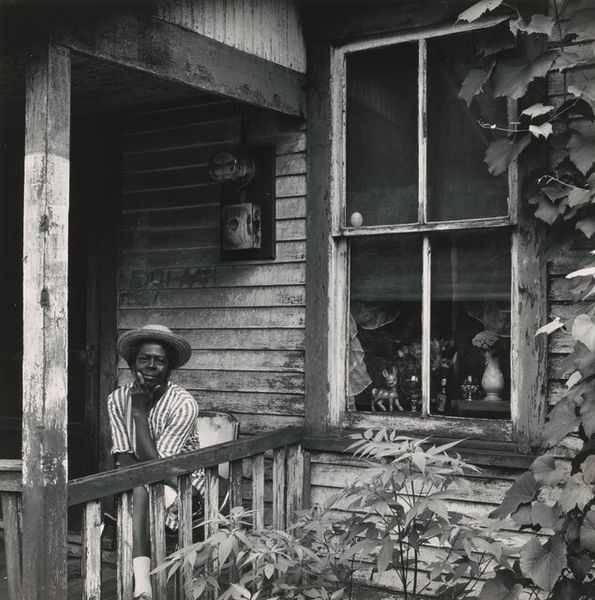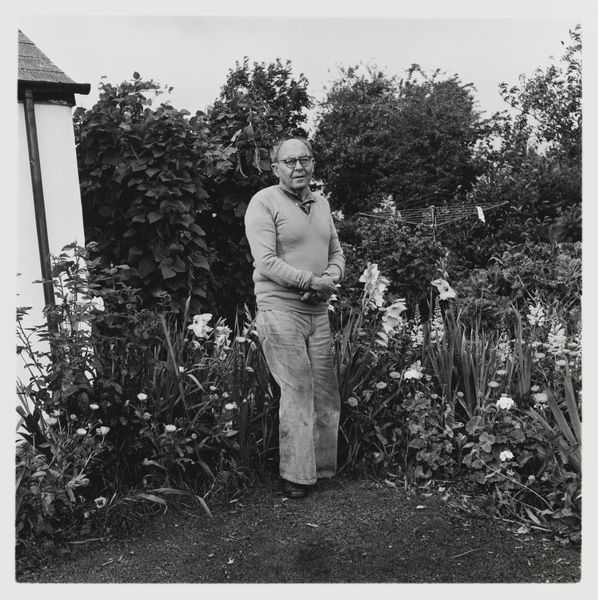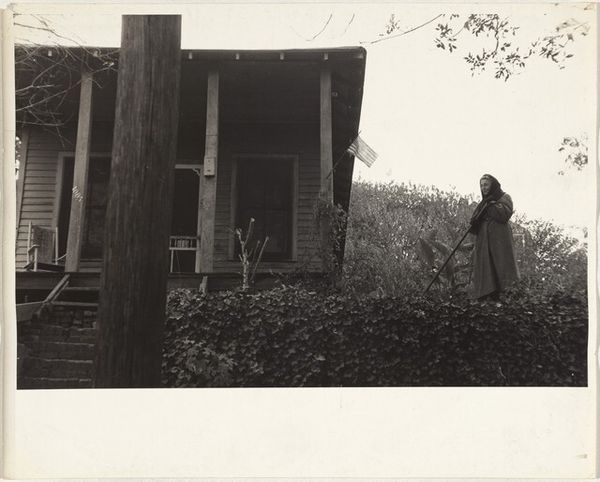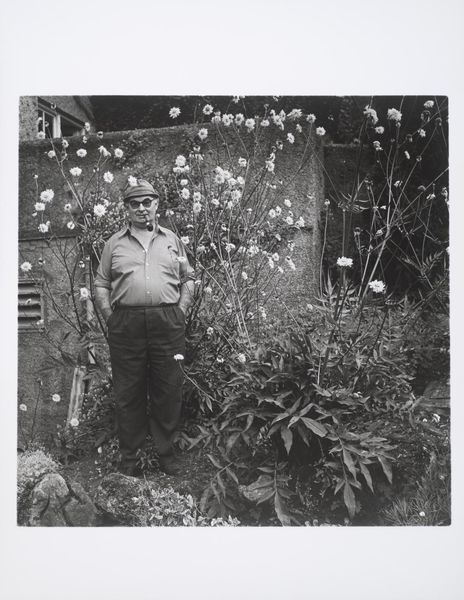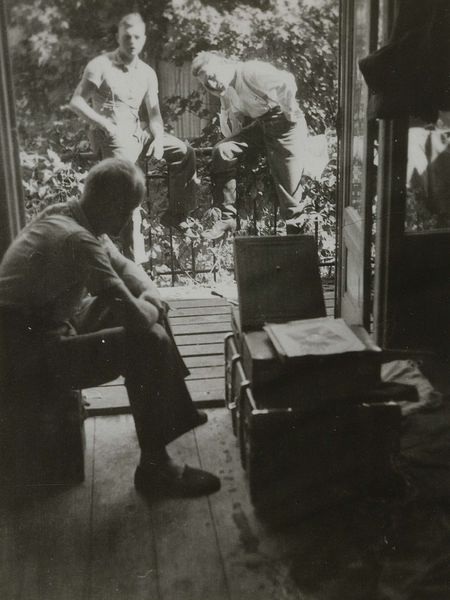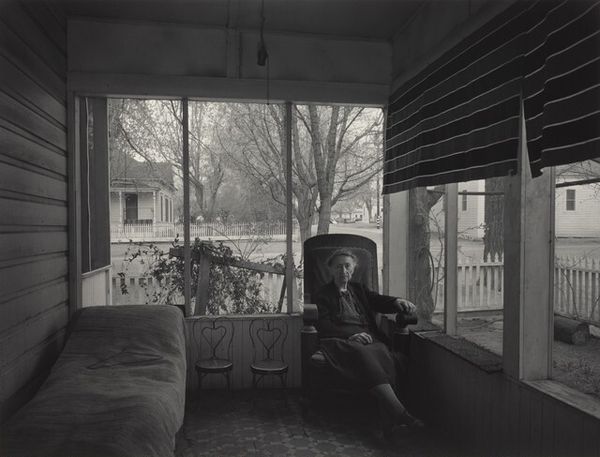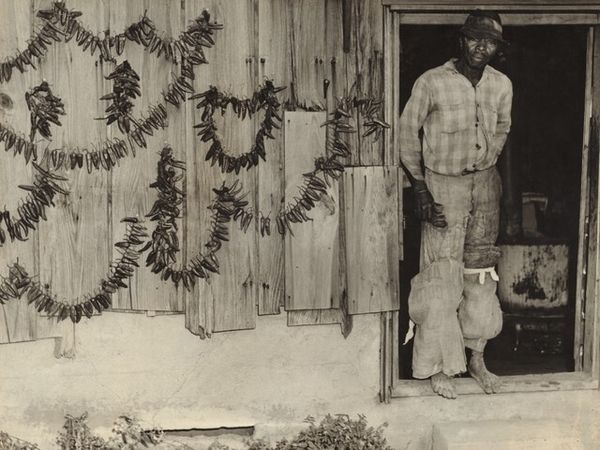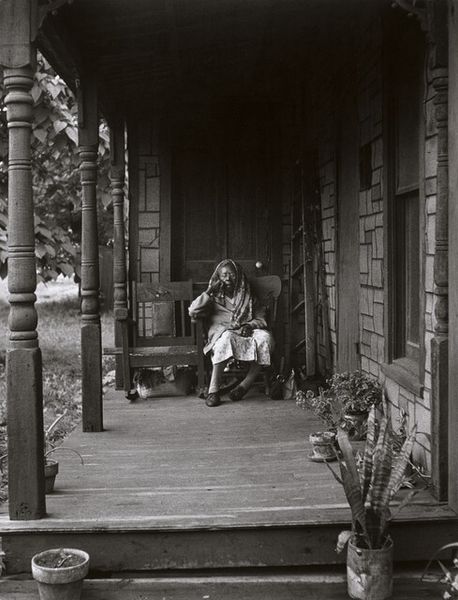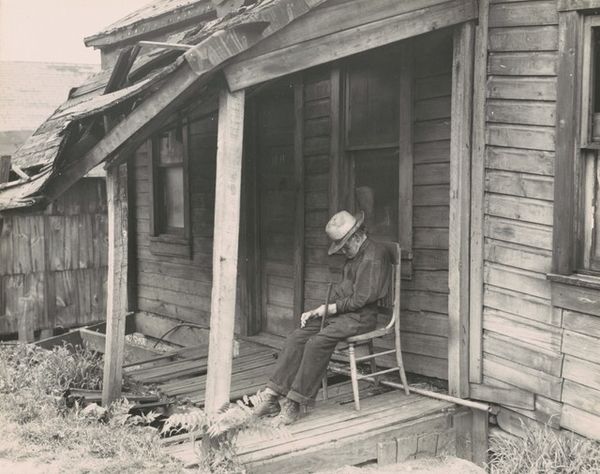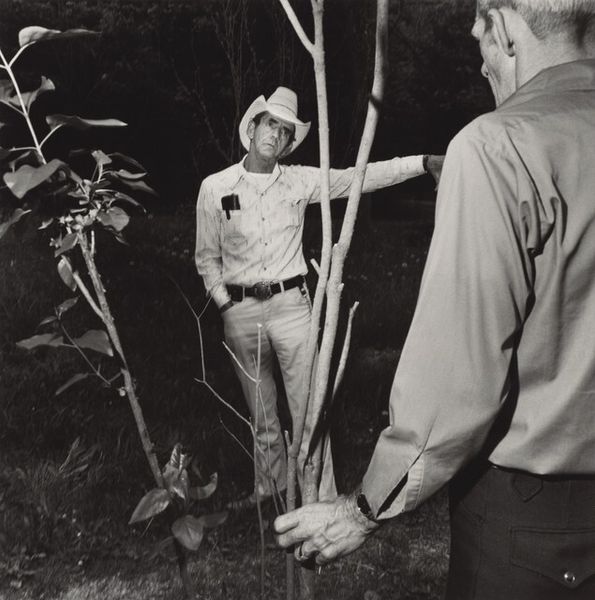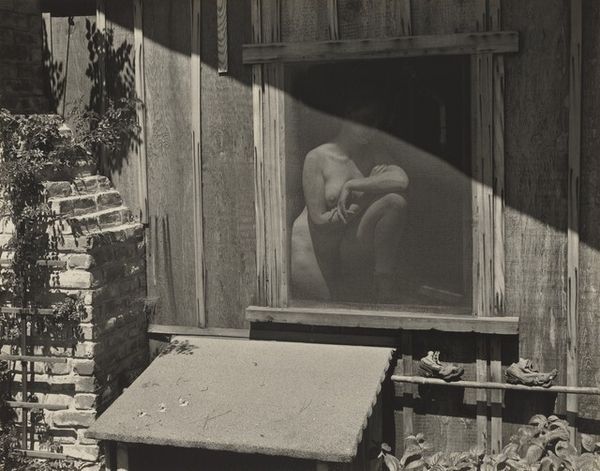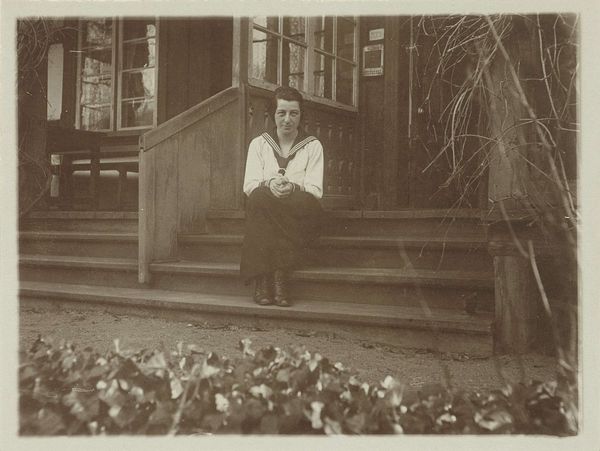
photography, gelatin-silver-print
#
portrait
#
landscape
#
photography
#
gelatin-silver-print
#
realism
Dimensions: image: 15.5 × 17.78 cm (6 1/8 × 7 in.) sheet: 25.4 × 20.32 cm (10 × 8 in.)
Copyright: National Gallery of Art: CC0 1.0
Curator: Looking at Milton Rogovin's photograph, "Appalachia," created in 1981 using the gelatin silver print method, I immediately get a sense of stark resilience. What about you? Editor: The overwhelming presence of natural and constructed objects speaks to resourcefulness born out of economic need, of making do. You see how densely packed it is—materials dominate every inch of space around this man. Curator: The man himself stands framed by the doorway, a silent guardian against a backdrop of obvious, but easily missed, signs of struggle, as evidenced by his humble clothing, or the state of the shack around him. What might you infer from his expression? Editor: The crossed arms, coupled with his gaze, suggests a complex internal world, pride perhaps, tinged with the resignation found too often among laborers whose work is devalued by the markets. Consider the labor that made everything we see: the construction, the garden—it's the material manifestation of a life. Curator: That reading seems especially relevant when you consider that Rogovin dedicated so much of his life to documenting working-class families, particularly those marginalized by society. The garden isn't just a garden. It is survival. Editor: Precisely. These recurring images create almost a visual language over time. We see how this echoes broader themes within American identity, linking notions of self-sufficiency to hard labor. Note, for example, how nature thrives within confinement of industrial discards. The light bulb is present within his porch and growing things cover the broken fencing on his lawn. Curator: The contrast between the verdant overgrowth and the decay is compelling, and that lightbulb inside the doorway as you noted also lends itself to deeper meaning. I also think, though, there is no easy read of any life: it seems that the symbolism can give us clues but the truth is likely unknowable. Editor: In the end, it invites reflection on how objects and environments reflect, reinforce, and ultimately shape who we become. It allows us to see working-class Americans with the respect they are so rarely given. Curator: Indeed, a powerful commentary on value and resilience. It does much to restore their pride, doesn’t it?
Comments
No comments
Be the first to comment and join the conversation on the ultimate creative platform.
